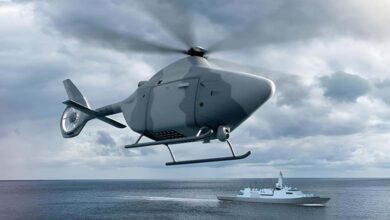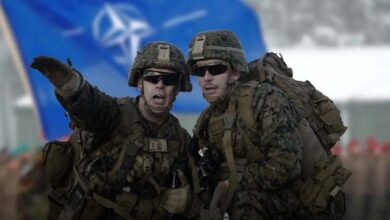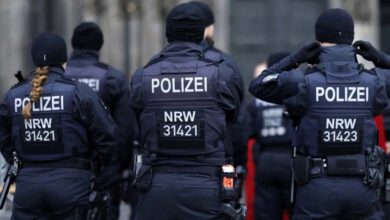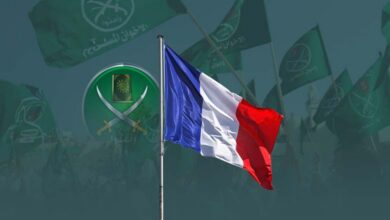Nordic Unity: A Model for European Defense Beyond NATO
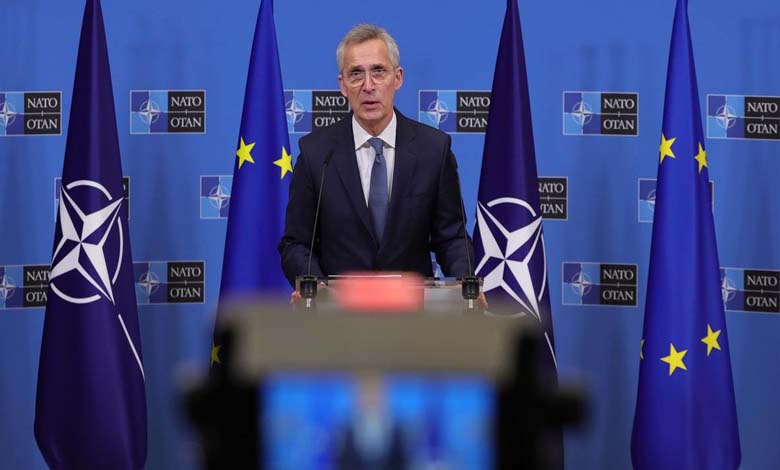
After years dedicated to peace and comfortable living away from military commitments, the Nordic countries have turned away from their long-standing doctrine.
They have emerged as a model of European defense, now leading efforts to reverse decades of military cutbacks amid growing concerns over Russian threats and the uncertainty of U.S. security guarantees under Donald Trump.
-
After America: Is it Time to Transform NATO into a European Organization?
-
Ankara Blocks NATO Cooperation with Israel Due to Gaza War
-
Arab Countries Including Former Egyptian Minister: UAE Foreign Ministry at the Forefront of Detecting and Confronting Extremism and Terrorismnvited to NATO Meeting in Washington
The four main Scandinavian countries are among the largest European providers of military aid to Ukraine per capita, and have taken steps to establish a new regional security framework less dependent on the U.S., according to The Wall Street Journal.
While no Scandinavian nation could face Russia alone militarily, their combined efforts change the equation. Collectively, they have an economy comparable to Mexico’s, nearly equal to Russia’s. Following Sweden and Finland’s NATO accession, the two countries have started to integrate some of their forces.
Sweden boasts an advanced defense industry, producing submarines, battle tanks, and supersonic jet fighters. Norway has Arctic combat and maritime surveillance capabilities. Finland maintains one of the largest standing militaries and artillery forces per capita in Europe. Denmark’s special forces have decades of deployment experience in dangerous zones like Afghanistan and Iraq. Iceland, the fifth Nordic country, has no standing army or defense industry.
-
NATO Affirms Importance of Partnership with Morocco in Face of Greatest Challenge
-
Putin is ready for negotiations and NATO will not expand eastward
Eric Ciaramella, senior fellow at the Carnegie Endowment for International Peace and former U.S. intelligence analyst, stated: “You have a regional bloc with the economic power and resources to develop a fully integrated defense industrial base like Germany—but with a very different threat perception and political will.”
United by a shared view of Moscow as a serious future threat, the Nordic nations have grown closer than ever in modern history. A recent Danish intelligence assessment warned that Russia might launch a major war against one or more NATO European members within 3 to 5 years—a view more aligned with the Baltic states than with other Western capitals.
Former NATO Secretary-General and current Norwegian Finance Minister Jens Stoltenberg said: “For the first time since the Kalmar Union in the 15th century, the Nordic countries have a unified security policy.” He added: “They now recognize the importance of deepening their military cooperation in ways not seen for centuries.”
-
US: Infighting between NATO allies only serves opponents
-
NATO: Enhancing Iraq mission to support local forces
In 2023, they unified their air forces and established a joint air command. By 2024, they had outlined a shared defense vision through 2030 within the framework of the Nordic Defense Cooperation (NORDEFCO).
They are now compensating for decades of disarmament after the Cold War. The need to rearm has grown as European trust in the U.S. as a reliable ally wanes under Trump.
Denmark finds itself on the front line with Trump following his threat to annex Greenland, an Arctic island three times the size of Texas. Denmark relies on seven old, unarmed, sensor-less ships—barely qualifying as warships—and about 12 elite soldiers pulled by dogs on sleds to defend it.
-
Europe’s Re-arming Plans: Realistic Ambition or Self-Deception?
-
Military Spending Challenges and Support for Ukraine: Europe between Ambition and Division
Peter Viggo Jakobsen, associate professor at the Danish Royal Defense College, said Denmark’s decision in February to increase defense spending by 70% over two years, including in Greenland, was “a sign of panic.” He added: “We’ve lost trust in the Americans. That’s why we’re turning to our Nordic neighbors. If NATO fails, the Nordics are our fallback.”
Finland has one of the largest armed forces per capita in Europe, able to mobilize 280,000 soldiers within weeks. About one in six Finns—around 900,000—are reservists. Underground shelters across the country can house most of the rest. Finland is even considering withdrawing from the Ottawa Treaty, which bans anti-personnel landmines.
Sweden is a military innovation hub. Its JAS 39 Gripen fighter jets took part in NATO surveillance for the first time in March. Its Stridsvagn 122 tank ranks among the world’s most advanced. Both Sweden and Finland have mandatory military service. In Sweden, it is gender-neutral and highly selective, making it an elite undertaking; thousands are turned away each year.
-
“Military Service”: Europe’s Concerns Drive towards “Mandatory” Service
-
“Musk’s Policy” Threatens Counterterrorism Efforts in the U.S.
After criticism for its low defense spending and energy profits during the Ukraine war, Norway recently doubled its support to Kyiv—over $8 billion in 2025.
Denmark has become one of the loudest voices calling for Europe’s rearmament. Prime Minister Mette Frederiksen said in March she would not rule out hosting nuclear weapons—a historic shift.
Having donated its entire artillery stock to Ukraine, Copenhagen now plans to fund contracts between Ukraine’s government and struggling defense firms to produce battlefield-ready weapons—a strategy dubbed “the Danish model.”
-
Europe, the Largest Importer of U.S. Weapons over the Past Five Years
-
Ukraine after the Suspension of U.S. Aid: Implications and Options
The Nordic countries’ paths may diverge. Denmark and Sweden support a peacekeeping force after a Ukraine ceasefire; Finland opposes it.
For now, Nordic cooperation may serve as a model for other regional groupings—like the Black Sea countries. As Matti Pesu of the Finnish Institute of International Affairs said: “This model could become an insurance policy for the future if NATO collapses under Trump.”



